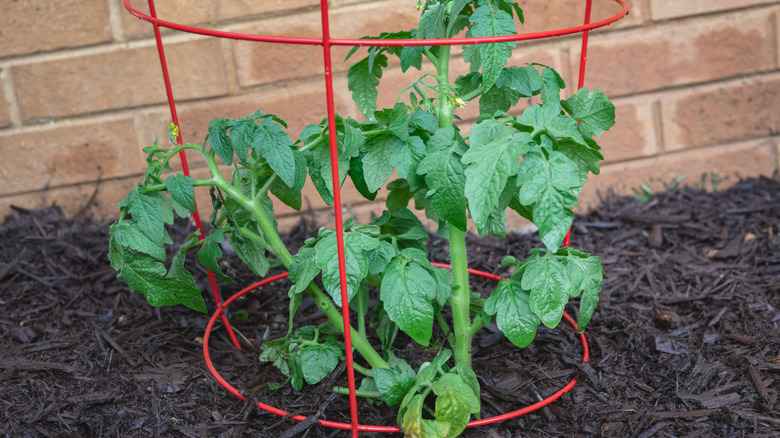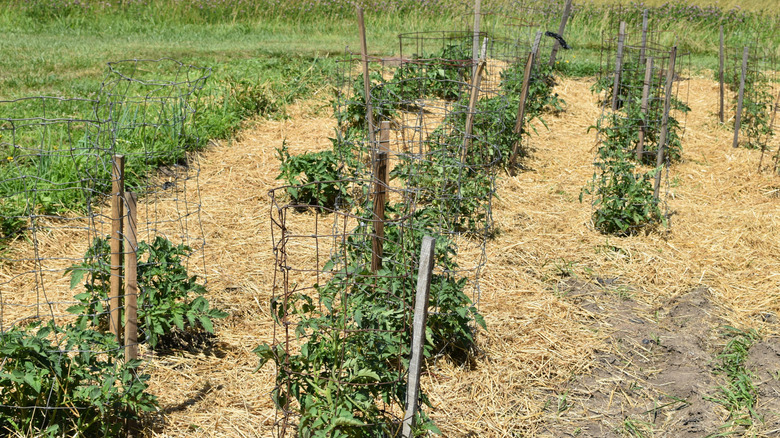Are Tomato Cages Helpful Or Hurtful To Garden Plants? Here's What We Found
We may receive a commission on purchases made from links.
If you've been to a garden or outdoor store recently, you've likely seen stacks of wire tomato cages for sale. These metal contraptions are generally around 3 feet tall and are billed as the ideal way to keep your tomato plants growing tall and strong, but the truth is a bit more complicated. There are definite downsides the using these wire cages. Most popular varieties of tomato plants can quickly outgrow them, potentially even causing them to topple over. While these cages can be harmful to larger tomato plants, they aren't without their uses in the garden. So, they might just be worth keeping around.
In addition to often lacking the strength and support necessary for larger tomato plants, many basic wire cages bend and get damaged easily, limiting their reusability. Though you can try to repair your tomato cages if they sustain any minor damage, they still may only last a few seasons. The cages can be helpful for those who are just beginning to dip their toes into gardening, though, thanks to their relatively minimal costs. They can also be useful for supporting smaller tomato plants, as well as other garden plants that need a bit of extra support.
Using tomato cages for the right types of tomatoes
If you're going to use tomato cages to support tomato plants in the garden, it's best to opt for growing smaller tomato plants like determinate varieties, such as 'Roma' and 'Bush Beefsteak.' These varieties stop growing at a certain height, decreasing the chances of them outgrowing the cage. Indeterminate tomatoes typically reach heights of 8 feet or more, making them far too large for a standard tomato cage. However, some dwarf indeterminate cultivars exist that have heights of 2 to 4 ½ feet, such as 'Rosella Purple' or 'Summer Sweet Gold.' So if you've planned to use wire tomato cages for your tomatoes be sure to check the plants' expected heights first.
Of course, tomato cages don't just have to be the classic lightweight metal ones often found in garden centers. There are also more robust styles available to buy that can support larger plants, like this 68-inch K-Brands tomato cage. You can even make your own tomato cages out of wire mesh and stakes, allowing you to customize the height. And of course, there are a variety of other staking and trellising strategies that work well for larger tomato plants, like adding a wooden stake and gently tying the plant to it as it grows.
Other uses for tomato cages in the garden
If you've realized that the tomato cages you've purchased aren't going to be the right product for your larger tomato plants, don't despair. There are still plenty of other ways to use the cages in the garden. They can make perfect trellises for peas and other lighter plants to climb. The cages are also often strong enough to provide pepper plants with the support they need. You may similarly be able to use them instead of stakes for some flowers that are prone to getting a bit top heavy and flopping over. They may even make a good option instead of stakes for small blueberry plants.
If you realize that you don't have any use for your tomato cage for growing plants, you could always turn it into an art project. Consider DIYing a charming bird bath with the old tomato cage. The cages can also be turned upside down and be transformed into pieces of clever yard art, such as adorable gnomes or spooky ghosts, with just a bit of creativity.

